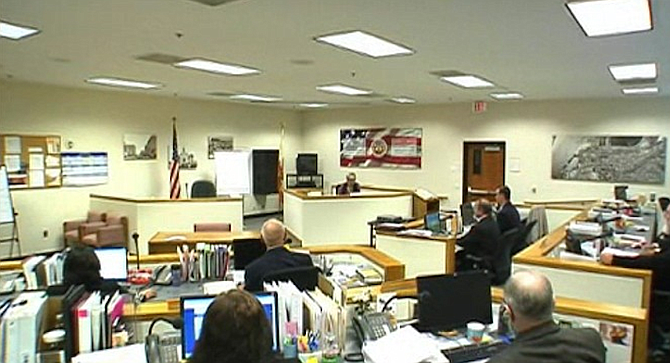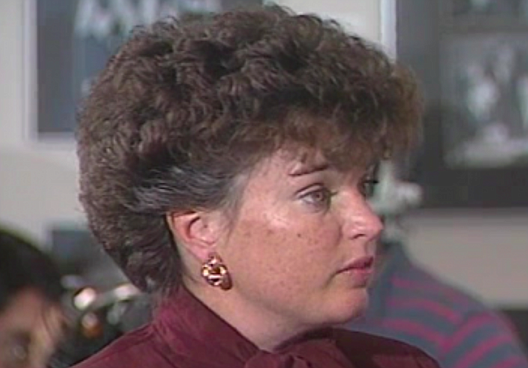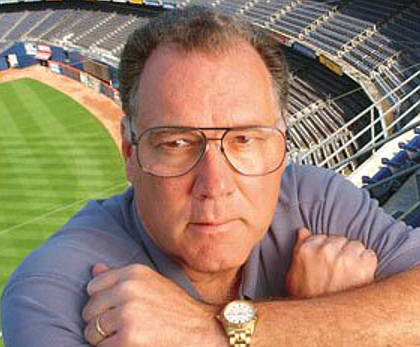 Facebook
Facebook
 X
X
 Instagram
Instagram
 TikTok
TikTok
 Youtube
Youtube

The San Diego County Grand Jury filed a report on April 13 asking the mayor and city council to “stop kicking the can down the road” when it comes to the transparency law that voters passed in 1992 by a whopping 86-percent.

This rule is part of the San Diego Charter and mandates that all persons proposing to do business with the city fully disclose identities of all parties involved.
The grand jury came to the conclusion that the rule wasn’t being enforced. In many instances they found that companies contracted with the city weren’t providing the required information. After reviewing city documentation and news articles dating between 1990 to 2016, the grand jury came to the conclusion that the rule is written in a way that’s difficult to enforce and easy to circumvent. One problem is that it places the burden of compliance at the feet of the applying entity versus the city.

The grand jury has given Mayor Kevin Faulconer two options. One is to respond to the city attorney’s October 2016 request to enact an ordinance finally enabling enforcement of the transparency law. Option two is to work with the city council on crafting ballot language for 2018. Besides working with the mayor, the grand jury wants the city council to stop ignoring advice from the city attorney’s office.
The grand jury found that three previous city attorneys had provided the city council specific recommendations to remedy problems with enforcement in 1992, 2005, and 2016. “All were summarily ignored,” said the grand jury.
In fact, the city attorney went to the city council days after the new rule went into effect in 1992 to propose council policy meant to make the rule more manageable. One suggestion was to limit disclosure to entities that could reasonably anticipate receiving $10,000 or more from a proposed contact. Another was to only apply the new transparency rule to contracts submitted to the city council for approval. This policy was never adopted.
City attorney Mike Aguirre reiterated this in the 2005 via a memo to the city council. In city attorney Jan Goldsmiths’s 2016 memo, it made clear that while the draft council policy proposed in 1992 might have been permissible 25 years ago, now it would have to go back to the voters.
The 2016 memo stated that surprisingly there is nothing in the law that requires disclosure to be provided to the city council, despite the argument on the 1992 ballot that the city council needs to know the identity of those receiving city contracts.
In 1992, then mayor Maureen O’Conner and then councilmember Valerie Stallings stated their argument in favor of the proposition on the 1992 ballot. They pointed to anonymous limited partners potentially receiving millions in taxpayer dollars without the city council knowing who they were. They asked the voters to vote yes to give them the tools they needed.
The law was looked at in 2014 when the city attorney identified it along with more than 50 other sections of the charter that needed to be addressed for being ambiguous, outdated, or incomplete. Sections were prioritized by upcoming elections, the first being November 2014. The transparency rule was relegated to the third election in November 2016.
The impetus for the transparency rule was all about a multi-million dollar affordable housing deal between the city and an alleged mobster in 1990. O’Conner put the brakes on the deal to give officials time to investigate Alvin Malnik’s background.
At that time, Malnik had been in the papers going back to at least the 1970s in reference to some questionable dealings, often dubbed the heir apparent to infamous gangster Meyer Lansky. Then councilmember Bruce Henderson shared giant reproductions of some of these news articles with the city council to stop the deal.
The city attorney looked into it and found that the Malnik referred to in the news articles was the same one that owned the properties on the table: Penasquitos Gardens in Rancho Penasquitos (now Canyon Rim Apartments) and Mt. Aguilar Apartments in Clairemont (now Stratton Apartments).
The city attorney stated that while reviewing someone’s general reputation was important when having long-term dealings with the city - maybe it wasn’t “as important when the city proposes to purchase property.” It was stated that potential detriments and benefits should be weighed, as the purchase from Malnik could help the city’s low-income housing program. Henderson tried to unseat the five-term city attorney in 1992, but lost to the incumbent (John Witt).
In the end, the city council approved the purchase and the selling of $32 million in bonds to finance the deal. O’Conner and Henderson were the only no votes in January 1991. Then councilmember Bob Filner voted yes while then councilmember Ron Roberts was a no-show.
Ed Miller was the district attorney at the time. First elected in 1970, Miller came in with guns blazing to sink “Mr. San Diego” himself, C. Arnholt Smith. He prosecuted Mayor Roger Hedgecock in the mid-1980s on corruption charges.
Miller investigated Malnik and released a report in March 1991 that found no improper conduct. News reports on Malnik were chalked up to rumors and hearsay. The only fact that could be proven was that Malnik had never been arrested or convicted of any crime.
Faulconer and the city council have been asked to respond by July 12. Based on the city attorney’s prior statements, it is likely headed to the ballot in 2018. Though, the grand jury can’t legally require action, only a response.
At the time of the grand jury report, the mayor’s office was said to be diligently working on the process of putting the pieces of the puzzle together. The grand jury is fine with whichever path the mayor chooses but wants him to move quickly.
The only two members of the city council to get back to me were Lorie Zapf and Barbara Bry. Zapf said, “I have always been an advocate for transparency and we need to continue to make as much information as possible available to the public.” Bry who took office in December said, “It’s common sense and good business to know who you’re doing business with, so I asked council president Cole to include an update on Section 225 [transparency rule] on the agenda for an upcoming meeting of the rules committee. I will continue to work with my colleagues on the council to ensure that the city adheres to Section 225 and is transparent about its contracts.”
Important to note that the council’s rules committee, under former councilmember Sherri Lightner, asked to address this same issue in July 2016 to no avail.


The San Diego County Grand Jury filed a report on April 13 asking the mayor and city council to “stop kicking the can down the road” when it comes to the transparency law that voters passed in 1992 by a whopping 86-percent.

This rule is part of the San Diego Charter and mandates that all persons proposing to do business with the city fully disclose identities of all parties involved.
The grand jury came to the conclusion that the rule wasn’t being enforced. In many instances they found that companies contracted with the city weren’t providing the required information. After reviewing city documentation and news articles dating between 1990 to 2016, the grand jury came to the conclusion that the rule is written in a way that’s difficult to enforce and easy to circumvent. One problem is that it places the burden of compliance at the feet of the applying entity versus the city.

The grand jury has given Mayor Kevin Faulconer two options. One is to respond to the city attorney’s October 2016 request to enact an ordinance finally enabling enforcement of the transparency law. Option two is to work with the city council on crafting ballot language for 2018. Besides working with the mayor, the grand jury wants the city council to stop ignoring advice from the city attorney’s office.
The grand jury found that three previous city attorneys had provided the city council specific recommendations to remedy problems with enforcement in 1992, 2005, and 2016. “All were summarily ignored,” said the grand jury.
In fact, the city attorney went to the city council days after the new rule went into effect in 1992 to propose council policy meant to make the rule more manageable. One suggestion was to limit disclosure to entities that could reasonably anticipate receiving $10,000 or more from a proposed contact. Another was to only apply the new transparency rule to contracts submitted to the city council for approval. This policy was never adopted.
City attorney Mike Aguirre reiterated this in the 2005 via a memo to the city council. In city attorney Jan Goldsmiths’s 2016 memo, it made clear that while the draft council policy proposed in 1992 might have been permissible 25 years ago, now it would have to go back to the voters.
The 2016 memo stated that surprisingly there is nothing in the law that requires disclosure to be provided to the city council, despite the argument on the 1992 ballot that the city council needs to know the identity of those receiving city contracts.
In 1992, then mayor Maureen O’Conner and then councilmember Valerie Stallings stated their argument in favor of the proposition on the 1992 ballot. They pointed to anonymous limited partners potentially receiving millions in taxpayer dollars without the city council knowing who they were. They asked the voters to vote yes to give them the tools they needed.
The law was looked at in 2014 when the city attorney identified it along with more than 50 other sections of the charter that needed to be addressed for being ambiguous, outdated, or incomplete. Sections were prioritized by upcoming elections, the first being November 2014. The transparency rule was relegated to the third election in November 2016.
The impetus for the transparency rule was all about a multi-million dollar affordable housing deal between the city and an alleged mobster in 1990. O’Conner put the brakes on the deal to give officials time to investigate Alvin Malnik’s background.
At that time, Malnik had been in the papers going back to at least the 1970s in reference to some questionable dealings, often dubbed the heir apparent to infamous gangster Meyer Lansky. Then councilmember Bruce Henderson shared giant reproductions of some of these news articles with the city council to stop the deal.
The city attorney looked into it and found that the Malnik referred to in the news articles was the same one that owned the properties on the table: Penasquitos Gardens in Rancho Penasquitos (now Canyon Rim Apartments) and Mt. Aguilar Apartments in Clairemont (now Stratton Apartments).
The city attorney stated that while reviewing someone’s general reputation was important when having long-term dealings with the city - maybe it wasn’t “as important when the city proposes to purchase property.” It was stated that potential detriments and benefits should be weighed, as the purchase from Malnik could help the city’s low-income housing program. Henderson tried to unseat the five-term city attorney in 1992, but lost to the incumbent (John Witt).
In the end, the city council approved the purchase and the selling of $32 million in bonds to finance the deal. O’Conner and Henderson were the only no votes in January 1991. Then councilmember Bob Filner voted yes while then councilmember Ron Roberts was a no-show.
Ed Miller was the district attorney at the time. First elected in 1970, Miller came in with guns blazing to sink “Mr. San Diego” himself, C. Arnholt Smith. He prosecuted Mayor Roger Hedgecock in the mid-1980s on corruption charges.
Miller investigated Malnik and released a report in March 1991 that found no improper conduct. News reports on Malnik were chalked up to rumors and hearsay. The only fact that could be proven was that Malnik had never been arrested or convicted of any crime.
Faulconer and the city council have been asked to respond by July 12. Based on the city attorney’s prior statements, it is likely headed to the ballot in 2018. Though, the grand jury can’t legally require action, only a response.
At the time of the grand jury report, the mayor’s office was said to be diligently working on the process of putting the pieces of the puzzle together. The grand jury is fine with whichever path the mayor chooses but wants him to move quickly.
The only two members of the city council to get back to me were Lorie Zapf and Barbara Bry. Zapf said, “I have always been an advocate for transparency and we need to continue to make as much information as possible available to the public.” Bry who took office in December said, “It’s common sense and good business to know who you’re doing business with, so I asked council president Cole to include an update on Section 225 [transparency rule] on the agenda for an upcoming meeting of the rules committee. I will continue to work with my colleagues on the council to ensure that the city adheres to Section 225 and is transparent about its contracts.”
Important to note that the council’s rules committee, under former councilmember Sherri Lightner, asked to address this same issue in July 2016 to no avail.
Comments